Obscure British Manufacturers.
Discussion
I couldn't help but put this in - the Rytecraft Scootacar. Some of you may have seen it before, but it's fascinating. The original one was 98cc, single speed, no springs, drive to one wheel and braking to the other.Top whack 15mph. A later version had a 250cc Villiers engine, 3 speeds, and could reach 40mph. Production was 1934/40.
Its fame comes from one Jim Parkinson, who drove one 15,000 miles round the world in the 60s, all under its own power. It was the early 98cc model !!!!
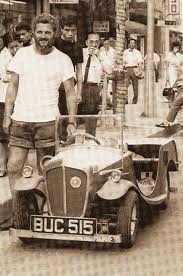
Its fame comes from one Jim Parkinson, who drove one 15,000 miles round the world in the 60s, all under its own power. It was the early 98cc model !!!!

Ebo100 said:
longshot said:
Rochdale.
Not a very exciting name for what are, in my opinion, pretty cool little cars.
This is a Rochdale Olympic.
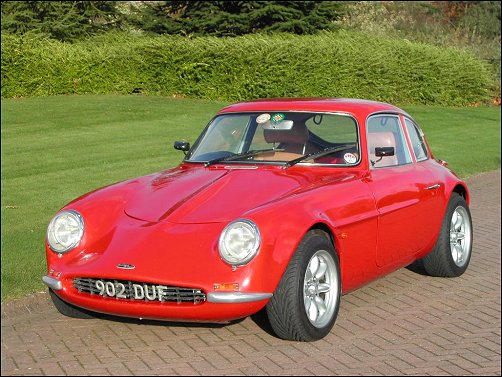
Good choice, I also think these are cracking little cars and really suit the Minilight wheels.Not a very exciting name for what are, in my opinion, pretty cool little cars.
This is a Rochdale Olympic.


nicanary said:
Until 1922, most of their production was based on bought-in parts, including Chapuis-Dornier engines. They then brought out their own 12hp 4-cyl design which was marketed until 1925. only 280 were bult, so there can't be many left.
Anyone remember the Autovia...
This was Riley's attempt at an up-market car, with a V8 2.8 litre engine. They decided on a separate brand name (shades of Toyota and Lexus) and even built a separate factory. Way overpriced, and only 35 built before Riley went into receivership. Prod was 1938/38.
Remember the Autovia? Of course, there's an International Autovia Rally held every year. Lovely cars but doomed from the start.Anyone remember the Autovia...
This was Riley's attempt at an up-market car, with a V8 2.8 litre engine. They decided on a separate brand name (shades of Toyota and Lexus) and even built a separate factory. Way overpriced, and only 35 built before Riley went into receivership. Prod was 1938/38.
spoodler said:
Many years back my father told me of a car a friend of his owned, apparently an Erskine. The only knowledge I have of such a name is an early Studebaker. Dad was adamant it was British...
The only Erskine listed is the subsidiary of the Studebaker Corp. It was a sub-range intended as the budget car, and was named after the corp's president Albert Erskine. Prod was 1927/30, but they were wasting their time and later renamed it the Studebaker 6. Lots of American cars were imported in those days, as they were usually well-made, reliable and well-equipped."Elva" were a small sports car marque in the late 50's early 60's The "Courier" was a glass fibre two seater convertible on a tubular steel chassis fitted with the MGA engine and gearbox built by Frank Nichols who later produced a prototype Coupe in 1964 named The "Elva GT 160" which had an impressive 185 BHP with a weight of only 11 cwt.
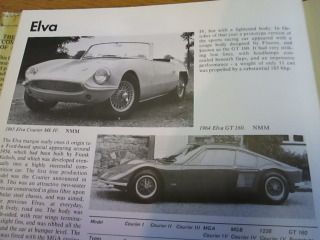

CRA1G said:
"Elva" were a small sports car marque in the late 50's early 60's The "Courier" was a glass fibre two seater convertible on a tubular steel chassis fitted with the MGA engine and gearbox built by Frank Nichols who later produced a prototype Coupe in 1964 named The "Elva GT 160" which had an impressive 185 BHP with a weight of only 11 cwt.

I personally wouldn't call Elva "obscure" - they were well known enough in the late 50s and 60s as makers of sports-racers and road cars. Started off with 1172cc racers, and took off big in the US with 1100cc Climax racers and Formula Junior single-seaters, often powered by DKW. Their rear-engined Mk7 and Mk8 cars were very competitive with BMW 2-litre engines.(The 160 is roughly based on that chassis, and today terrorises GT40s in historic racing).
The problems began when their US agent went bust, having over-ordered. Frank Nichols sold out to the Lambretta-Trojan concern, and the works were used to construct the McLaren Can-Am customer cars. Frank packed it in at that point (I think 1971).
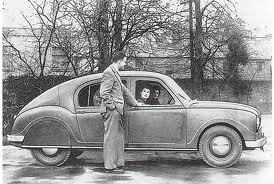
I thought you might be interested in this, the Fedden. Not strictly speaking a manufacturer because it never got past the prototype stage, and just about bankrupted its designer and backers.
Roy Fedden was a talented aeronautical engineer who designed successful engines during WW2 including the Bristol Centaurus and Napier Sabre. After the war he realised quite rightly that there would be a huge demand for new cars, and decided to go for it. Unfortunately he selected the weirdest format possible - a three-cylinder air-cooled radial. Because of the size and layout of the engine, it had to be positioned at the rear above the axle line, which meant that the car overturned when it went round corners.
Despairing of getting it to work, he dropped the whole project, and finished up lecturing at Cranfield. I reckon the principle was pretty advanced for the time, and would have worked if he'd gone for a conventional power source.Mind you, the Commer TS3 commercial engine used in the 50s was similarly weird, but worked. Designed for tank use in WW2, it was a three cylinder, six piston horizontally-opposed, two-stroke, supercharged unit - WTF! Made a fantastic noise.
How about Atalanta? Manufactured between 1937 and 1939. Very well thought of, very rare. My grandfather had a Lincoln V12 engined tourer during the 40's, wish we still had it. My father says the springs were so hard, it didn't soften up untill above 80 mph.
The name is being revived, a la Bugatti, so a lot of blurb and fiction about Google produces a lot of conflicting info, but I think Wikipedia has the essence of it.
Another very well thought of name was Squire,
The name is being revived, a la Bugatti, so a lot of blurb and fiction about Google produces a lot of conflicting info, but I think Wikipedia has the essence of it.
Another very well thought of name was Squire,
Earl'Dingleberry said:
He was inspired by Tatras?

It's strange really - with air-cooled cars (VW, Tatra etc) you'd think it would be better to have the engine at the front. But they all seem to be rear-mounted.
The Squire was a real cracker. a truly beautiful car. Only 1.5 litres supercharged, but hand-built to a very high spec, and therefore ridiculously expensive. Only a few were made.
nicanary said:

I thought you might be interested in this, the Fedden. Not strictly speaking a manufacturer because it never got past the prototype stage, and just about bankrupted its designer and backers.
Roy Fedden was a talented aeronautical engineer who designed successful engines during WW2 including the Bristol Centaurus and Napier Sabre. After the war he realised quite rightly that there would be a huge demand for new cars, and decided to go for it. Unfortunately he selected the weirdest format possible - a three-cylinder air-cooled radial. Because of the size and layout of the engine, it had to be positioned at the rear above the axle line, which meant that the car overturned when it went round corners.
Despairing of getting it to work, he dropped the whole project, and finished up lecturing at Cranfield. I reckon the principle was pretty advanced for the time, and would have worked if he'd gone for a conventional power source.Mind you, the Commer TS3 commercial engine used in the 50s was similarly weird, but worked. Designed for tank use in WW2, it was a three cylinder, six piston horizontally-opposed, two-stroke, supercharged unit - WTF! Made a fantastic noise.
Thats one i have never seen before,very interesting!
CRA1G said:
"Elva" were a small sports car marque in the late 50's early 60's The "Courier" was a glass fibre two seater convertible on a tubular steel chassis fitted with the MGA engine and gearbox built by Frank Nichols who later produced a prototype Coupe in 1964 named The "Elva GT 160" which had an impressive 185 BHP with a weight of only 11 cwt.

the Elva GT160 is one of my favourite cars. Looking at that rear quarter, you wont be surprised to learn its a Trevor Fiore design
Gassing Station | Classic Cars and Yesterday's Heroes | Top of Page | What's New | My Stuff







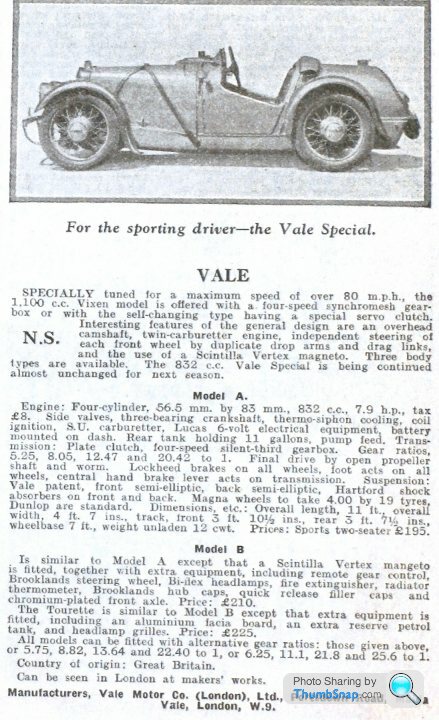
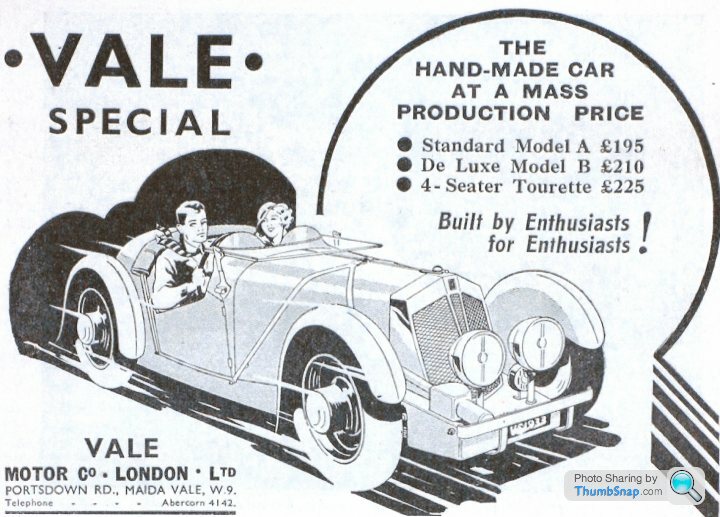
 king way!'
king way!'